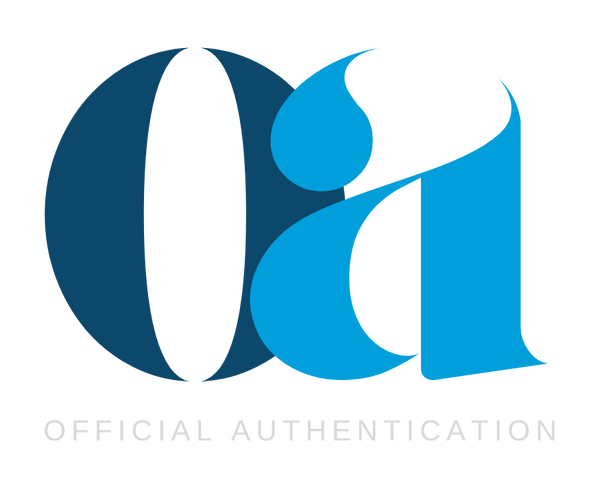Understanding the historical evolution of luxury brands forms the cornerstone of effective authentication. While counterfeiters excel at replicating surface-level details, they consistently struggle to capture the nuanced historical context that defines authentic luxury pieces. For authentication experts and collectors alike, brand history serves as an invaluable tool for distinguishing genuine items from sophisticated replicas.
The Foundation of Authenticity
Brand history provides the essential framework for understanding what makes each luxury house unique. Every established luxury brand carries decades or centuries of design evolution, manufacturing techniques, and cultural significance that cannot be easily replicated. These historical elements create a complex authentication landscape that extends far beyond simple visual inspection.

Hermès, founded in 1837 as a harness and saddle maker, developed specific leather-working techniques that remain evident in contemporary pieces. The transition from equestrian goods to luxury accessories brought with it construction methods and quality standards that continue to define authentic Hermès products today. Understanding this progression allows authenticators to recognize the subtle craftsmanship markers that counterfeiters consistently miss.

Photo by: Louis Vuitton
Similarly, Louis Vuitton's origins as a trunk maker in 1854 established manufacturing principles that influence every authentic piece. The brand's evolution from functional luggage to luxury accessories created specific construction standards, hardware specifications, and material choices that serve as reliable authentication benchmarks.
Dating and Provenance Verification
Historical knowledge enables precise dating of luxury items, a crucial component of authentication. Each brand follows specific evolutionary patterns in their designs, materials, and manufacturing processes. These changes create identifiable periods that help determine whether a piece aligns with its claimed production date.

Chanel's quilted pattern, introduced in 1955, underwent subtle modifications over the decades. The chain weight, leather thickness, and stitching patterns evolved according to specific timelines that knowledgeable authenticators can trace. A bag claiming to be from 1960 but displaying characteristics from the 1980s immediately raises authenticity concerns.

Gucci's transformation under different creative directors created distinct periods with unique design elements. The Tom Ford era (1994-2004) introduced specific hardware finishes and construction techniques that differ markedly from earlier periods. Understanding these transitions allows authenticators to verify whether a piece's characteristics match its supposed production timeline.
Manufacturing Evolution and Technical Markers
Luxury brands continuously refine their manufacturing processes, creating historical markers that serve as authentication tools. These technical evolutions often involve subtle changes that counterfeiters overlook or cannot replicate accurately.

Prada's triangle plaque underwent specific modifications throughout its history. The introduction of the "R" notch in the early 2000s created a clear authentication marker for dating purposes. Earlier pieces without this feature are authentic to their period, while newer pieces must display this characteristic to pass authentication.

Hardware evolution provides another crucial authentication avenue. Dior's cannage pattern hardware experienced specific changes in weight, finish quality, and attachment methods across different production periods. Understanding these progressions enables authenticators to identify pieces that display anachronistic features.
Cultural Context and Design Philosophy
Brand history encompasses more than manufacturing details—it includes the cultural context and design philosophy that shaped each house's aesthetic evolution. This deeper understanding helps authenticators recognize authentic design DNA that counterfeiters struggle to capture.

Bottega Veneta's intrecciato weaving technique, developed in the 1960s, represents more than a visual pattern. The specific leather preparation, weaving tension, and finishing methods reflect decades of refinement that create subtle but identifiable characteristics in authentic pieces. Counterfeiters may replicate the visual appearance but consistently fail to achieve the precise technical execution.

Photo by: The New York Times
Balenciaga's architectural approach to design, rooted in Cristóbal Balenciaga's couture background, influences every authentic piece. Understanding this design philosophy helps authenticators recognize when proportions, construction methods, or finishing techniques deviate from the brand's established standards.
Regional Production and Sourcing History
Historical knowledge of production locations and material sourcing provides additional authentication layers. Luxury brands often maintain specific manufacturing relationships and material suppliers that create identifiable characteristics in authentic pieces.
Hermès leather sourcing follows established patterns tied to specific tanneries and regions. Understanding these relationships helps authenticators recognize authentic leather characteristics and identify pieces that display materials inconsistent with the brand's historical sourcing practices.

Rolex movement evolution and case construction techniques developed through specific Swiss manufacturing traditions. Knowledge of these historical progressions enables authenticators to identify movements, case construction methods, and finishing techniques that align with authentic production periods.
The Technology Integration Timeline
Modern luxury authentication increasingly relies on understanding how brands integrated technology into their authentication measures. Each house adopted anti-counterfeiting measures according to specific timelines that create additional verification opportunities.

Louis Vuitton's date code system, introduced in the 1980s, follows specific formatting rules that evolved over time. Understanding these progressions helps authenticators verify whether a piece's date code aligns with its claimed production period and characteristics.

Chanel's hologram sticker implementation and serial number systems developed according to specific timelines. Knowledge of these authentication features' introduction dates and evolution patterns provides crucial verification tools.
Building Expertise Through Historical Understanding
Effective luxury authentication requires comprehensive historical knowledge that extends beyond surface-level brand recognition. This expertise develops through systematic study of brand evolution, manufacturing progression, and cultural context that shapes authentic luxury pieces.
Understanding brand history transforms authentication from simple checklist verification to comprehensive analysis that considers multiple historical factors. This approach creates more reliable authentication outcomes while building the expertise necessary to identify increasingly sophisticated counterfeits.
For authentication professionals and luxury collectors, historical knowledge represents an invaluable investment in expertise that enhances both authentication accuracy and appreciation for genuine luxury craftsmanship. This foundation enables confident navigation of the complex luxury market while protecting against the sophisticated counterfeits that continue to challenge the industry.
The intersection of historical knowledge and technical expertise creates the comprehensive understanding necessary for reliable luxury authentication in today's challenging market environment.

